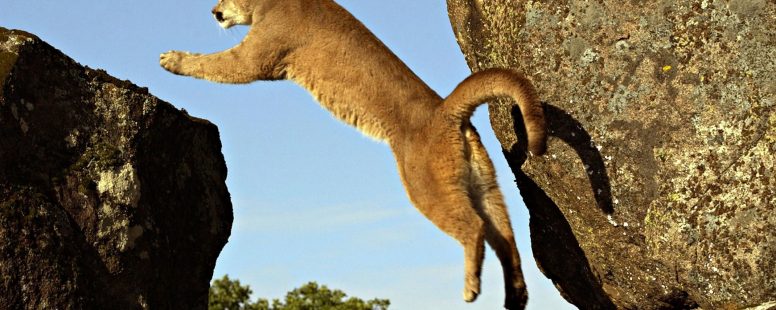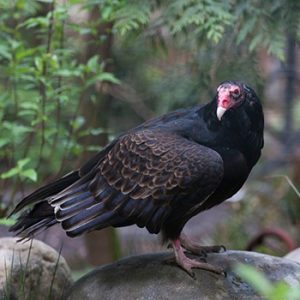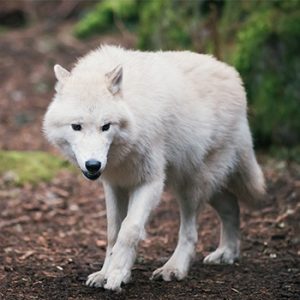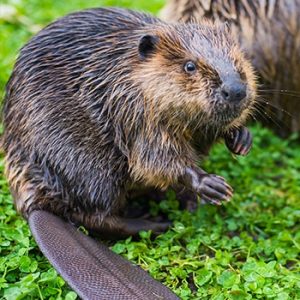Discovering the creatures of the Northwest Trek trails
In the 1930’s, a husband and wife team of conservationists purchased over 400 acres of desolate, charred land in south Pierce County, Washington. Fast forward 80 years (and factor in the meticulous planning, fastidious nurturing, generous donating, and fortuitous timing), and today, people of all ages can visit Northwest Trek Wildlife Park.
Located about 30-miles south of Puyallup – or the same distance east of Olympia – Northwest Trek Wildlife Park has been entertaining guests since it first opened in 1975.
In part one, we learned about the history of the land, and how Dr. David and Connie Hellyer came to own it. We spoke with naturalists about the newest hands-on learning area at Northwest Trek, and we took a tram ride through the wilderness, meeting face to face with curious caribou, gregarious mountain goats and behemoths like American bison! But there are dozens of animals and attractions worth checking out along the park’s myriad trails and pathways.
The first stop is an enclosure housing something often seen hanging low in the skies above Washington in flocks up to a dozen or more at a time. I’m talking about that carnivorous carrion consumer, the turkey vulture.
This bald raptor plays an important role in the ecosystem as a scavenger by disposing of dead meat that would otherwise be a breeding ground for disease. And here’s a little known fact: turkey vultures are solar powered! Okay, not really, but you’ll often find them basking in the warm sun between meals.
Another common sight in the rural areas of Washington is the barn owl, easily distinguished from other owls by their white, heart-shaped faces and long, pointed wings. Barn owls hunt at night and eat rodents and very small mammals, which tend to be plentiful after humans clear land to plant crops. That’s why you’ll often find barn owls in a barn.
From two legs to four, the next set of creatures on the Northwest Trek trail are some ferocious felines, starting with the greatest college mascot in Washington State history. I’m talking, of course, about the mighty Cougar!
Though she was in stealth mode when I visited, I did learn that the cougar – also commonly known as a mountain lion or less commonly known as a puma, panther, or catamount – is the world record holder for jumping mammals. The cougar can jump 20 feet vertically from a standstill. By comparison, Australian Darren Jackson broke a Guinness world record for the highest standing box jump at 58.1 inches…which is a measly 4.8 feet.
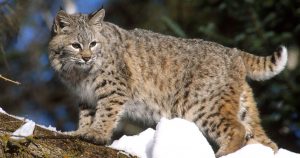 Next up is the cougar’s much smaller relative known as the bobcat. They can be light brown, gray or black with spots or streaks. They have a short “bobbed” tail with a black tip, and they have a range of vocalizations similar to domestic cats, especially the females during breeding season.
Next up is the cougar’s much smaller relative known as the bobcat. They can be light brown, gray or black with spots or streaks. They have a short “bobbed” tail with a black tip, and they have a range of vocalizations similar to domestic cats, especially the females during breeding season.
The Northwest Trek cats soon give way to dogs, starting with red foxes (which, by the way, aren’t always red). But they’re arguably one of the cuter members of the greater canine family.
Next to the fox enclosure is one of the more popular highlights of the walking trails, and I just happened to arrive there at lunchtime. One of the Northwest Trek naturalists gave us a quick rundown of what was about to happen, explaining that they’d left cracked eggs around the habitat to encourage these formidable foes to sniff out their meals.
And then, they let loose the wolves! And the crowd went wild.
Watching grey wolves dart around their forest home was nothing like watching a dog in search of a dropped potato chip. These creatures are ruthless, methodical, and driven, using their superior sense of smell to locate the eggs with a ferocious intensity.
Despite the name, the gray wolf’s coat can range from black to almost pure white. This species’ listing as endangered, however, is far from black and white. Northwest Trek says they’re endangered, but the US Fish and Wildlife Service lists them as endangered, threatened, recovering, and delisted – depending on where they are. Even in Washington State, the federal agency lists them simultaneously as endangered and delisted, depending on which east or west side of roughly the Tri-Cities you’re in. So before you make up your mind, do your research and at least form an educated opinion.
After the wolves comes a bevy of critters found all over the pacific northwest, starting with one of the most significant animals in north American history…the noble beaver. Beavers are technically rodents (but noble ones!). They have small ears and eyes, long, flat, paddle-shaped, scaly tails, and are found in forested areas with fresh water.
The beavers were putting on quite a show, swimming, spinning and playing peek-a-boo with the park’s patrons. I wondered how many of those patrons realized that almost 400 years earlier, the population of beaver in North America was nearly depleted by Native American overharvesting to meet the needs of competing French and English fur trading companies. The western exploration of the new world was largely the result of fur companies looking for new beaver stocks to resupply London and Paris with beaver felt hats, which were all the rage at the time.
Otters, on the other hand, were never in fashion – despite their standing as one of the cutest critters in the mammal world. River otters are members of the weasel family, who have evolved to live primarily in the water. They have slick, streamlined bodies, and webbed feet for graceful, agile movement underwater. Otters are among the most playful of mammals, having been known to chase and play with each other and objects, as well as construct water slides just to pass the time between meals.
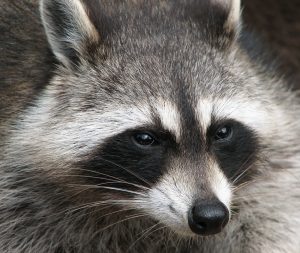 Another mammal you’ll find on the Northwest Trek walking tour is one that most Washingtonians are certainly no stranger to; that black-eyed bandit often found raiding garbage cans. Raccoons are curious animals, often handling and investigating whatever they discover. Their extremely sensitive forepaws are their main tool for finding food, which includes everything from plants to bugs to fish…pretty much anything they can get their little paws on.
Another mammal you’ll find on the Northwest Trek walking tour is one that most Washingtonians are certainly no stranger to; that black-eyed bandit often found raiding garbage cans. Raccoons are curious animals, often handling and investigating whatever they discover. Their extremely sensitive forepaws are their main tool for finding food, which includes everything from plants to bugs to fish…pretty much anything they can get their little paws on.
There are other animals to be seen along the Northwest Trek walking trails, like badgers, porcupines, fishers, eagles, lynx, and skunk, so take a Saturday and bring the family to check it out for yourself.
They’re open year round – though only on weekends in the fall and winter months. Tickets range from about 8 bucks up to 23 for adults, and Pierce County residents and military get a discount.
Or better yet, purchase an annual membership to enjoy unlimited admission year round, plus a host of other benefits. Just visit their website at www.nwtrek.org! And go back to watch part one of the Northwest Trek adventure.

